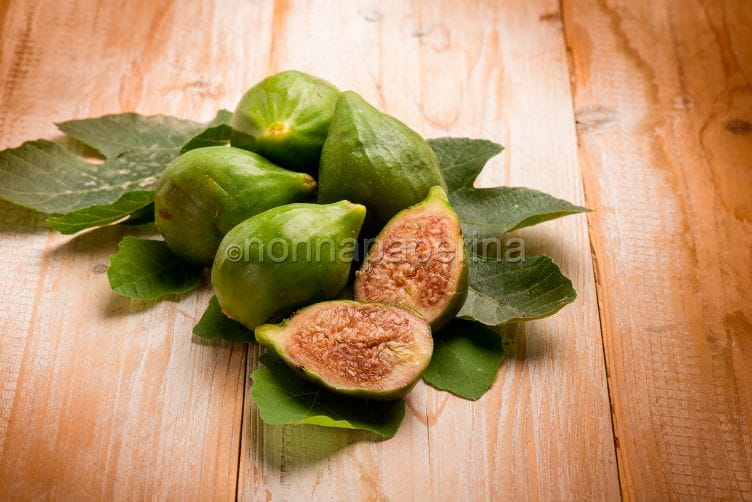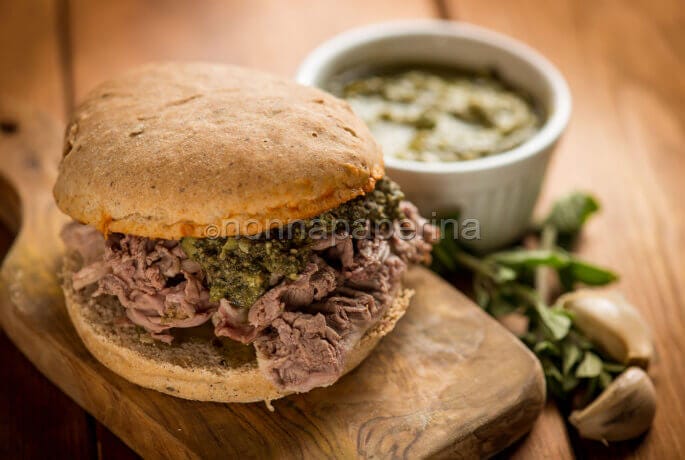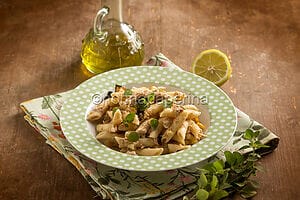Figs

A fruit with a thousand resources and its properties
Figs are not fruits for all seasons and climates; in fact, they are very demanding and can only be grown in subtropical or warm areas. In Italy, cultivation guarantees good results in Sicily, southern Calabria, and Salento. The tree is small, leafy, and extremely susceptible to soil moisture. It adapts to any type of soil, but the characteristics of the fruit are enormously influenced by it. The harvest takes place from June to August.
The fig itself is a unique fruit that resembles a sugary dessert more than a fruit. Generally speaking, the consistency is thick and mushy, and the flavour is sweet to the point of dominance. The dimensions are small, although extremely variable. However, the length is in the range of 4–7 cm. The skin can tend towards green or dark purple, and more rarely, it tends towards red.
They are distinguished nutritionally by having an average calorie intake of 47 kcal per 100 grammes. Potassium, iron, calcium, vitamin A, vitamin C, and a portion of the B-group vitamins are all found in figs. Additionally, figs have mild laxative qualities.
Here are the varieties of figs.
Here is a list of the most popular varieties of figs.
- Black Brogiotto: The fruit is medium in size, the skin is dark, and the pulp is bright red.
- White Brogiotto: Similar to the previous one, but with green skin and lighter pulp.
- Callara Figs: With its characteristic pear shape, it stands out for its above-average size, light purple skin, and pinkish pulp.
- Dattero Figs: The peel is very dark, and the pulp is red. It is among the sweetest varieties and ripens late.
- Dottato Figs: It is the most prized fig as well as the most widespread variety in Italy. The peel is green, and the pulp is white. It has a sweet and delicate flavour.
- Gentle Figs: It has a heart shape enhanced by generous dimensions. The peel is green, and the pulp is light red.
- Verdino: Small in size, with green skin and reddish pulp. An extremely late variety, it is characterised by a balanced sweetness.
Some interesting savoury recipes
Figs, although extremely sweet, can also contribute to savoury recipes. The gastronomic properties of figs and their softness make them perfect for first and second courses. Obviously, you have to think carefully about combinations.
The first recipe I want to present to you is the risotto with figs and tomino cheese. A truly delicious first course, with some sweet and sour hints. In this case, the green varieties should be used and should be added at the end of the recipe, a few minutes before the risotto is cooked. The combination with tomino is exceptional, as it creates a pleasant contrast both in terms of texture and from an organoleptic point of view.
Another savoury recipe that I recommend you try is the pizza with figs and ham. The ham should be raw, while the figs should be the purple (or black) variety. The flavour of the raw ham contrasts with the extraordinary sweetness of the fig, giving life to a truly odd but perfect combination. For this recipe, I recommend using fresh cheese instead of mozzarella.
This wonderful fruit is also a great addition to side dishes. The salad with radicchio, feta cheese, and figs serves as an illustration. In this case, the aim is to create a savoury-salty contrast. On the other hand, feta cheese is a medium-salty type of cheese that, although not reaching the levels of parmesan, still contains salt. From an aesthetic perspective, this dish is really unique—a true combination of colours!
The main sweet recipes
The best way to consume figs is raw, like any other fruit. However, they deserve to be part of many dessert recipes. Here is a selection of the ones that struck me the most.
Fig cheesecake: The foundation is consistently composed of a combination of butter and ground biscuits. Mascarpone, yoghurt, cream, and agar agar are combined to make the filling. But the real show-stopper is the glaze that’s created with sugar, figs, and a little lemon juice. Additional fresh figs are used as a garnish; they are sliced in half to resemble petals.
Tiramisu with figs: It’s a spin on the well-known tiramisu, which is notable for its ease of preparation and ability to be eaten “from the glass.” Sponge cake takes the role of the ladyfingers. But the figs serve as a transitional layer, coated in a mixture of passito wine and honey and then layered with traditional mascarpone cream.
Dried figs with almonds: It’s a simple recipe with an excellent yield. In fact, it involves inserting an almond inside each fig and proceeding with oven-drying. In this way, the figs are like biscuits and become a baked dessert.
Fig Jam: One of the greatest jams ever, fig jam stands out for its sweetness and was an obvious choice for this list. The uses are the same as with other jams, i.e., it is excellent on bread with butter or to enrich tarts and fill cakes.
What benefits do we get from figs?
I mentioned the nutritional properties of figs; now let’s go into detail about their benefits. Here are some of their interesting properties:
- They facilitate digestion: The digestive system is stimulated by fresh figs and, to a lesser extent, dried ones. This is because they contain a lot of water and fibre.
- They help prevent tumors: From this point of view, the credit goes to the many antioxidant substances they contain.
- They support the immune system: Figs provide excellent doses of vitamins, especially vitamin C, which increases immune defence.
- They help keep blood sugar and high cholesterol under control: Like many other fruits, figs also help keep cholesterol under control. Furthermore, they have no detrimental effects on blood sugar levels, despite having a significant sugar component.
Who can’t eat figs?
Given its reputation as one of the healthiest meals, discussing contraindications may seem odd. There are actually very few documented contraindications. People subject to calculosis, or the formation of stones, should pay attention to the consumption of figs. The reason for this lies in the presence of molecules known as oxalates in the fruit.
Is there an allergy to figs? Above all, we ought to be discussing allergies to birch pollen and related substances. The same symptoms always appear, and they can be systemic, gastrointestinal, dermatological (itching and swelling), or both. Thankfully, the latter are incredibly uncommon.
How to grow figs: a detailed guide
If you have a garden or vegetable patch available, growing figs is an excellent idea. Also, it doesn’t require an expert, but just a little patience, a lot of care, and some precautions. For clarification, the fig “takes root” only if the climate is mild; thus, it gives its best at low latitudes.
As for the soil, it must be well worked and exposed to the sun, as the fig likes heat. Like many other plants, it cannot tolerate water stagnation. Furthermore, the fig should be transplanted in the last part of the year, i.e., from October onwards, avoiding the coldest days. To plant it, it is advisable to prepare very deep holes, about 70 cm, and use simple compost as fertiliser.
As far as irrigation is concerned, the fig tree requires minimal effort as it does not require much water. However, it is good to pay attention to dry periods, which can damage the plant irreversibly. In this case, it is necessary to proceed with emergency watering.
The fig is resistant, but it is necessary to keep the soil slightly moist, which is why a small mulch should be made a few years after planting. The best solution would be to surround the plant with a layer of dry straw, thus generating some sort of insulation.
In terms of the harvest, it occurs at the end of the summer and may extend into September. Finally, since the fig tree doesn’t require special care from this angle, trimming should hardly be discussed. You might restrict yourself to light pruning and clipping dry branches in this regard.
Figs FAQs
Do figs make you fat?
Although figs are very sweet, they do not make you fat. From a caloric point of view, they are on the same level as other sugary fruits.
When is the season for figs?
Figs are typically summer fruits; therefore, they are found fresh from June to August.
Can those with high cholesterol eat figs?
The vitamins in figs, together with their good fibre and water content, make them a healthy fruit. So yes, even those with high cholesterol can eat this delicious fruit.




















